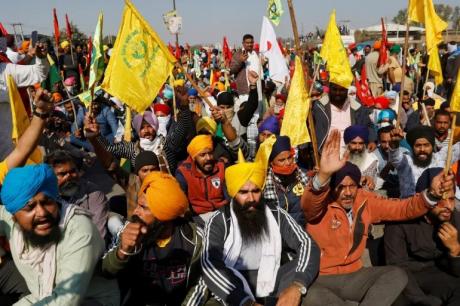The dimmed hopes are being revived and the despair is being dimmed out as the efforts to rescue 41 trapped workers in an Uttarakhand tunnel are nearing to mark their success, with safely bringing them out and reuniting them with their loved ones, who had gone through an extreme level of agony and despair for the past two weeks, praying for their lives and safe rescue.
The men got trapped after a part of an under-construction tunnel in Silkyara in the Uttarkashi district of Uttarakhand got collapsed on November 12. After two-weeks of rescue efforts that blended with men and machineries, the mission to rescue them had finally resorted to manual drilling, which is being carried out by a team of rat miners.
Rat miners is a term that's widely searched and discussed across the nation as their efforts in rescuing the trapped workers had produced significant progress that took them very close to the men. So, who are rat miners and how they are instrumental in saving the lives of 41 men? It is certain that the rat miners have become the gamechangers in this rescue mission as they have successfully drilled through rocky debris to build a path to the trapped workers to breath fresh air.
Rat mining or rat-hole mining refers to the narrow pits that are dugged into the ground and they would be just large enough that only one person can enter. These pits are mostly dugged to extract coal and they are most common in northeastern states, particularly in Meghalaya. The rat-hole minning is completely done through manual drilling and being done by skilled workers.
Rat miners are those who descend into the narrow pits using a rope and bamboo ladders. Being considered as extremely vicious, this method is usually used to extract coals. Interestingly, this rat-mining method has been termed illegal in many countries as there are several cases where the miners would die due to asphyxiation and lack of oxygen. Even India has imposed a ban on this method in 2014.
In 2014, India's National Green Tribunal (NGT), recognising the severe environmental impacts and the unsafe labour conditions, has imposed a ban on this practice in 2014. The NGT observed, "It is also informed that there are umpteen number of cases where by virtue of rat-hole mining, during the rainy season, water flooded into the mining areas resulting in death of many individuals including employees and workers."
Several experts have said that the mines are typically unregulated, lacking safety measures such as proper ventilation, structural support, or safety gear for the workers, thereby creating a rather harmful environment for the rat miners. It is also argued that the mining process can cause water pollution, land degradation, and deforestation. Nevertheless, this banned practice has now become a gamechanger in rescuing 41 trapped workers in the tunnel.
After repeated failures of machineries, the government has brought in a team of twelve rat miners and gave them a humongous task of rescuing the trapped workers. The Indian Express has quoted Parsadi Lodhi, a rat miner from Jhansi who is part of the team, saying that he would enter the rescue pipes and use hand-held tools to dig through the remaining debris blocking the exit of the tunnel.
Lodhi has been in this rat mining profession and said, "There is no reason for us to be scared. This is a 800 mm wide pipe and we have worked in 600 mm holes. There is around 12 metres of debris and if its just soil, it will take around 24 hours, but if there are rocks in the debris, it could take 32 hours or more." Of the 60-metre debris, the authorities on Tuesday reported that the rescuers have drilled around 53 metres and asserted that they would reach the trapped workers within Tuesday.
While it was reported that the workers would be brought out of the tunnel on Tuesday evening, the National Disaster Management Authority said that it could take more time. While addressing a press conference, retired Lt Gen Syen Ata Hasnain, who is a member of National Disaster Management Authority (NDMA), said, "There are 41 people inside (tunnel) and outside there are several people who are involved in the rescue work, safety and security these people are equally important. We are not in any hurry."
"It will take about three to five minutes to pull out one individual each. So, it will take about three to four hours to rescue all 41 workers," Hasnain added. With the view of treating all the trapped workers, adequate beds and healthcare equipment have been installed at the Community Health Centre in the town of Chinyalisaur in Uttarakhand. Several ambulances were stationed inside the tunnel and a team of doctors from AIIMS were brought to the site to test the health and vitals of the workers and to treat them. The families of the workers are also told to be ready to welcome them.









Comments